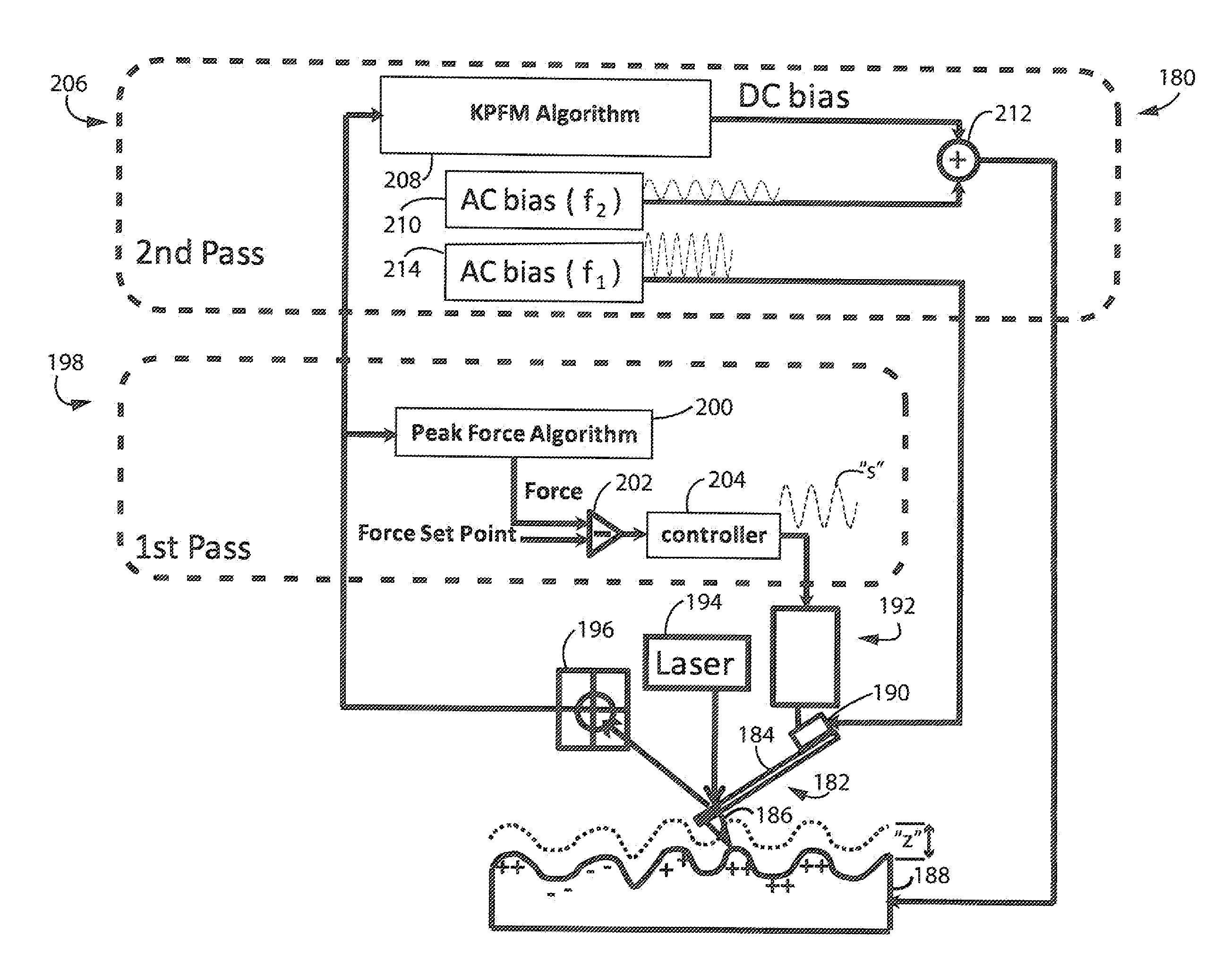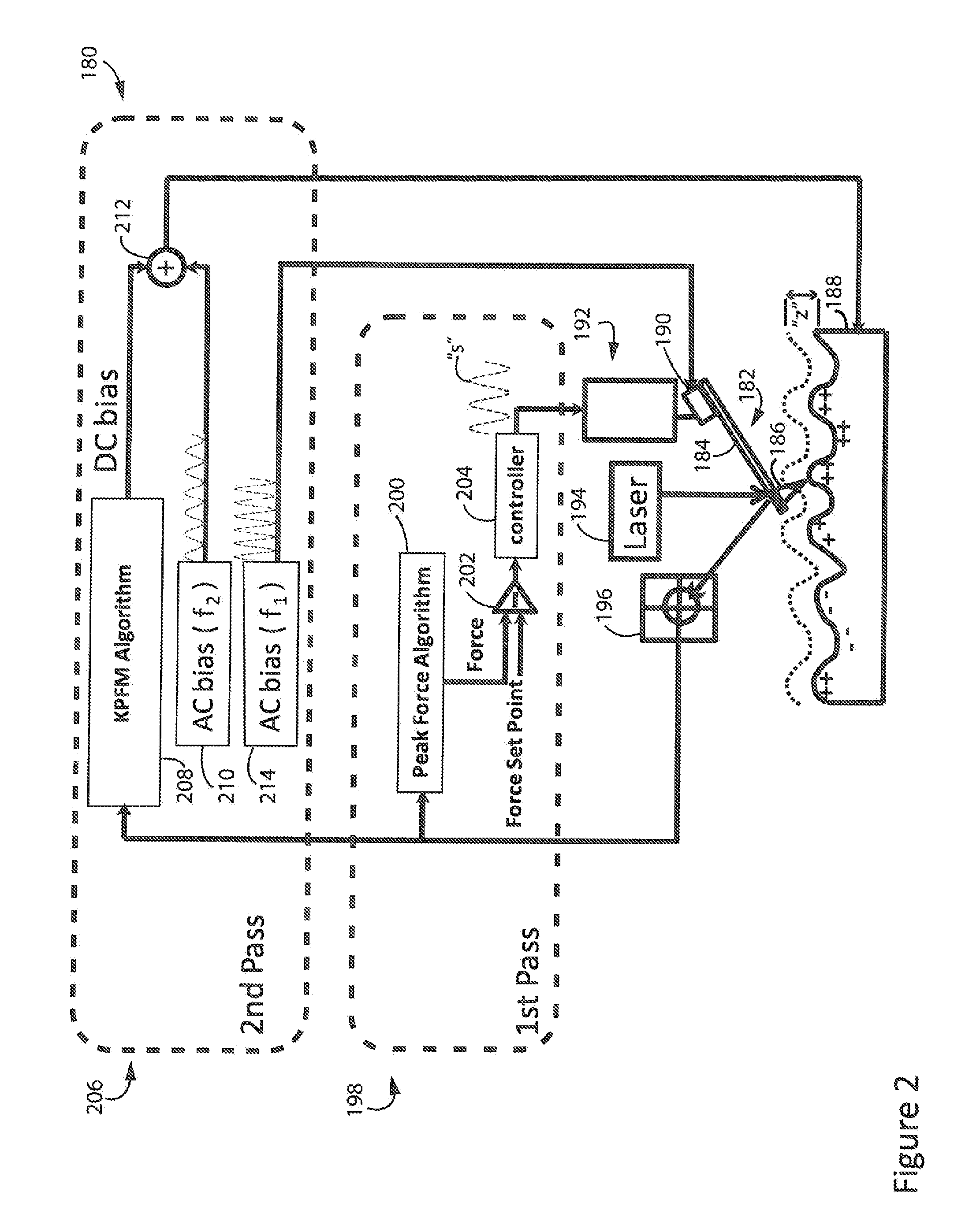Method and Apparatus of Electrical Property Measurement Using an AFM Operating in Peak Force Tapping Mode
- Summary
- Abstract
- Description
- Claims
- Application Information
AI Technical Summary
Benefits of technology
Problems solved by technology
Method used
Image
Examples
Embodiment Construction
[0068]The benefits of PFT mode AFM are numerous. Most noteworthy is its capability of simultaneous quantitative mechanical property mapping and topographical imaging. Moreover, its ability to use cantilevers having properties (spring constant, resonant frequency and quality factor) over a wide range allows for probe selection most suited to KPFM operation. It is the object of this invention to combine PFT mode AFM with KPFM, preferably FM-KPFM, and AM-KPFM as an alternative. This will offer simultaneous surface topography, mechanical properties, and surface potential (electrical property) mapping with enhanced sensitivity. Ease-of-use operation also benefits beginner users for getting high quality data without intensive learning and practicing. The implementation and benefits will be outlined below.
[0069]Peak Force Tapping Mode (PFT mode), provides a solution to the quantitative mechanical property mapping. With the tip driven in and out of the contact with the surface at multi-kilo...
PUM
 Login to View More
Login to View More Abstract
Description
Claims
Application Information
 Login to View More
Login to View More - R&D
- Intellectual Property
- Life Sciences
- Materials
- Tech Scout
- Unparalleled Data Quality
- Higher Quality Content
- 60% Fewer Hallucinations
Browse by: Latest US Patents, China's latest patents, Technical Efficacy Thesaurus, Application Domain, Technology Topic, Popular Technical Reports.
© 2025 PatSnap. All rights reserved.Legal|Privacy policy|Modern Slavery Act Transparency Statement|Sitemap|About US| Contact US: help@patsnap.com



